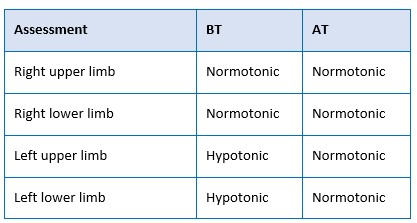Ayurvedic management of Acute Cerebro Vascular Accident due to Hypertensive Bleed (Pakshaghata): A Case Report
DOI:
https://doi.org/10.21760/jaims.9.6.49Keywords:
Pakshaghata, CVA, Stroke, hemorrhage, Ayurveda, Nasya, ShirodharaAbstract
Stroke is defined as the fast onset of focal neurological deficit within which poor blood flow to the brain ends up in necrobiosis. It is the second most common reason for worldwide mortality. Hemorrhagic strokes are classified based on their underlying pathology. Some common causes of bleeding are hypertensive trauma, ruptured aneurism, arteriovenous fistula, transformation of previous ischemic pathology and drug-elicited hemorrhage. They result in tissue injury by inflicting compression of tissue from an expanding hematoma. Pakshaghata described in Ayurveda can be correlated with Stroke. All Acharyas have emphasized that in the manifestation of Pakshaghata, Vata is predominant with the association of Pitta and Kapha Dosha. Here is the case of 46 years old male diagnosed as an acute case of hypertensive bleed in the right centrum semiovale and putamen (Magnetic Resonance Image-MRI of Brain) resulting in left-sided hemiparesis. Assessments were done on the basis of National Institute of Health (NIH) Stroke Scale, Medical Research Council (MRC) Scale for Muscle Strength, Barthel Index and Scandinavian Stroke Scale. He was given Yastimdhu Ksheera Nasya, Takra Shirodhara, Kalyanaka Ghrita as Anuvasana Basti and oral medications. After 12 days of treatment there was marked improvement in these scales.
Downloads
References
Yasti-Prajapati Shashikant M, Patel Bhupesh R. Phyto-Pharmacological Perspective of Yashtimadhu (Glycyrrhiza glabra Linn.)– A Review. International Journal of Pharmaceutical & Biological Archives (IJPBA). 2013; 4(5): p.833–841.
Takra-Singal HK, Neetu, Kumar A, and Rai.M. Ayurvedic approach for improving reaction time of attention deficit hyperactivity disorder affected children Ayu. 2010 July- Sep; 31(3): 338 - 342. http:// dx.doi.org/10.4103/074 – 8520.77169.
Anu-Nishteshwar K. Sahasrayogam; Sanskrit text with English Translation, chapter 2, 1st ed; New Delhi; Chaukambha Sanskrit series office, 2020; p. 81.
Acharya Y T. Charaka Samhita with Ayurveda Dipika commentary of Chakrapani Datta. Sutra Sthana 20/11. Reprint ed. Varanasi (India): Chaukambha Orientalia; 2014; p.113.
Acharya Y T. Sushruta Samhita with Nibandhasangraha commentary of Dalhanacharya. Chikitsa Sthana 28/43-5. Reprint ed. Varanasi (India): Chaukambha Sanskrit Sansthan; 2014; p. 619.
Sushruta Samhita with English translation of text and Dalhana’s commentary along with critical notes by Dr.P.V.Sarma, First edition; Varanasi; Caukhambha Bharati Academy, 1999.
Zhan C, Yang J. Protective Effects of Isoliquiritigenin in Transient Middle Cerebral Artery Occlusion Induced Focal Cerebral Ischemia in Rats. Pharmacol Res. Mar 2006; 53(3): 303–9p.
Jyoti, S, Pandey, K. Understanding the mode of action and efficacy of takra dhara. Eur J Biomed Pharmaceut Res 2019; 6:111-3.
Nishteswar K and Vaidyanath R. Sahasrayogam; Sanskrit text with English Translation, Taila Prakarana chapter 09, verse 3, Reprint; Varanasi; Chaukambha Sanskrit series office, 2020; p.110.
Sharma S, Commentator. Sidha Basti kalpa Adhyaya, chapter 5, verse 24. In: Kalpasthana. Ashtanga Samgraha of Vriddha Vagbhatta. 4th ed. Varanasi: Chaukhamba Sanskrit Series Office; 2016. p. 605.
Subhan F, Karim N, Gilani AH, Sewell RD. Terpenoid content of Valeriana wallichii extracts and antidepressant - like response profiles. Phytother Res. [Internet] 2010 [Cited 2019 March 26]; 24(5):686 – 91.
Padmaja Kalshetti, Ramesh Alluri, Prasad Thakurdesai. Antidepressant and Anti – Anxiety Effect of Ellagic Acid from Punica granatum L. Rind in Olfactory Bulbectomy Model in Rats. Int. J. Pharm. Sci. Rev. Res., 34(1), September-October 2015; Article No. 32, Pages: 197-204.
Nishteswar K and Vaidyanath R. Sahasrayogam; Sanskrit text with English Translation, Gutika Prakarana chapter 9, verse 54, Reprint; Varanasi; Chaukambha Sanskrit series office, 2020; p. 346.
Varuni B G, An Open-labeled Clinical Study to Evaluate the Safety and Efficacy of Anuloma DS in Improving Constipation, Indian Journal of Clinical Practice, Vol.34, No.2, July 2023.
Hariprannaji V P. Rasayogasagara; vol-1, verse 1813-5; Chaukambha Krishnadas Academy, Varanasi (India); p. 192.
Rasa Tantra Sara-Sidha Yoga Sangraha kharaliya Rasayana 37
Das G, Mishra B, Shastri A D. Apasmara Rogadhikara verse 40-43 In:Shastri RD(editor).Bhaishajya Ratnavali Vidhyotini Hindi Vyakhya-Vimarsha-Parishista Sahita. Reprint,131-2 edition 2005. Varanasi: Chaukhambha Sanskrit Prakashan. 2005:p.
Das G, Mishra B, Shastri A D. Raktapitta Rogadhikara verse 102-6 In:Shastri RD(editor).Bhaishajya Ratnavali Vidhyotini Hindi Vyakhya-Vimarsha-Parishista Sahita. Reprint,131-2 edition 2005. Varanasi: Chaukhambha Sanskrit Prakashan. 2005:p.701
Nishteswar K and Vaidyanath R. Sahasrayogam; Sanskrit text with English Translation, Parishishta Prakarana chapter 10, verse 110, Reprint; Varanasi; Chaukambha Sanskrit series office, 2020; p. 403.















